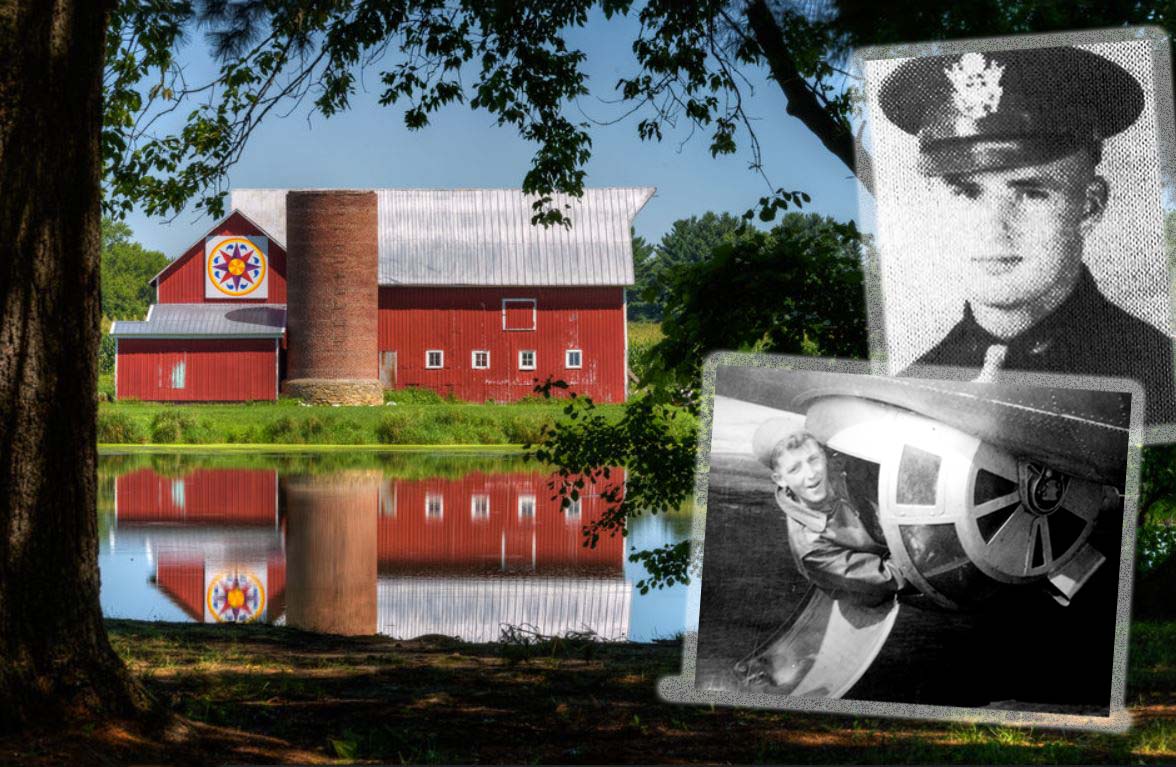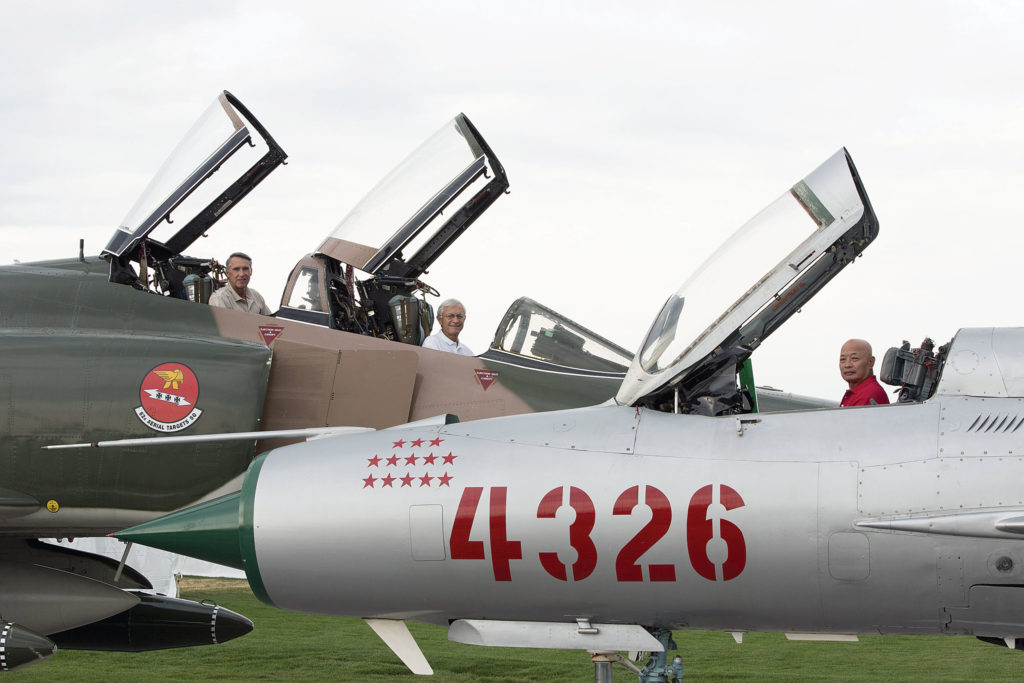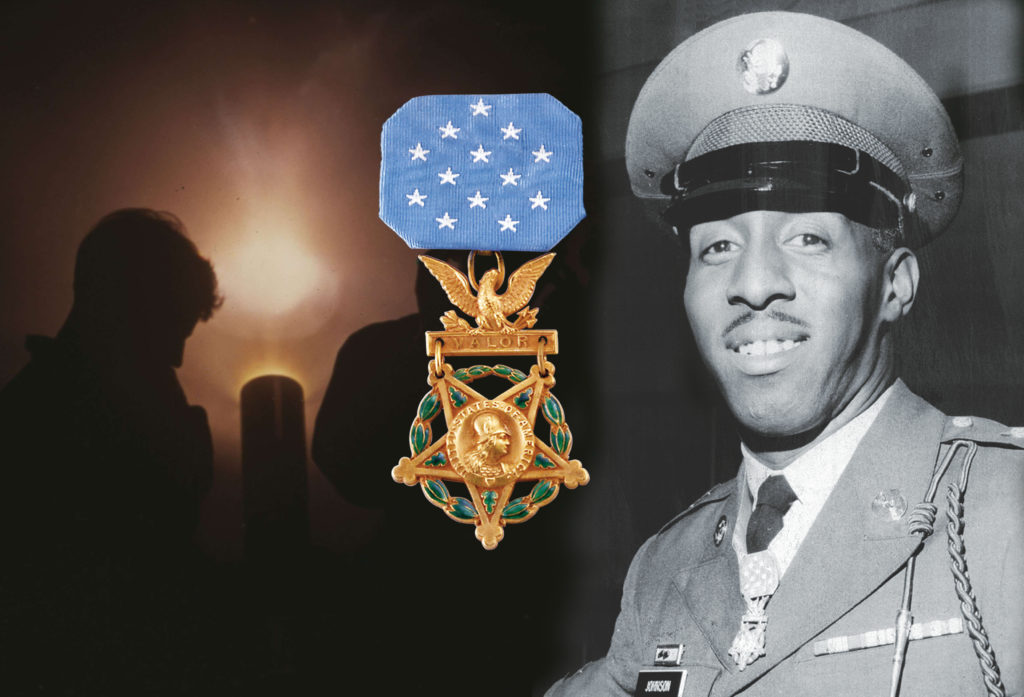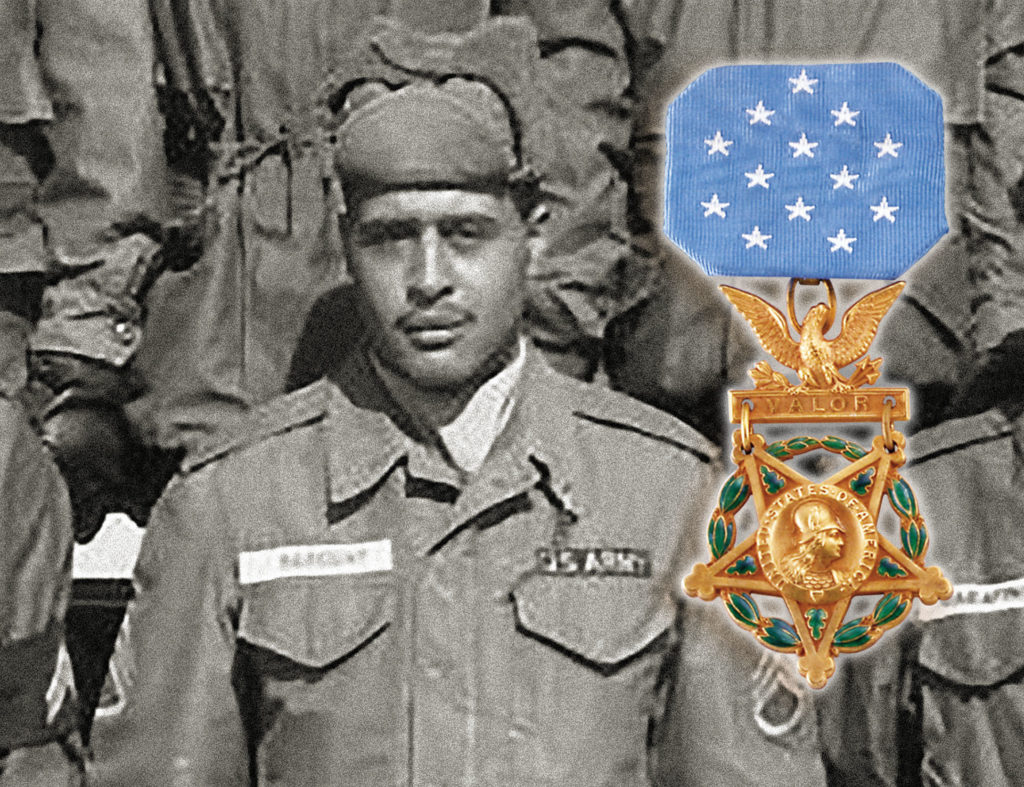The townspeople of little Mondovi, a town of barely 2,500 people in northwest Wisconsin, can squint back in time and see a young boy standing by the lake, feeding his pet white gander, before World War II swept him away to the European theater as a P-51 pilot. They’ll see him playing football with his best friend at nearby Mondovi High School, where they also co-captained the basketball team, before his buddy, too, was sent to fight in Europe as a B-17 gunner.
Fast forward a few years and the image morphs into an upended town when one of the young men returns home and the other doesn’t. It’s a story that played out in various ways, and varying forms of triumph and heartbreak, across the country. In this case, it involved the fate of the youngest World War II ace.
GET HISTORY’S GREATEST TALES—RIGHT IN YOUR INBOX
Subscribe to our HistoryNet Now! newsletter for the best of the past, delivered every Monday and Thursday.
Childhood Buddies
Doug Ward and Chris Hanseman were born in Mondovi just over a year apart, the former on May 10, 1923, and the latter on Aug. 2, 1924. Elementary school chums living only a block apart, they shared a passion for airplanes from the start.
“I remember there were few airplanes in our area,” Ward said in “Turret Tales,” a compilation of his stories, letters and memories published by his longtime companion, Judith Ohm, who still lives in Mondovi. “The only person I heard about was Charles Lindbergh, who, of course, was everyone’s idol. Anytime an airplane flew over, I would run out in the yard waving and yelling, ‘Hi Lindy, hi Lindy.’ That was a big event, to see an airplane fly over.”
The friends’ first and only chance to fly together came when a pilot from the nearby village of Strum landed his three-seat Piper J-5 Cub in a field near Mondovi High School and offered them a ride. Both boys, in high school at the time, jumped at the opportunity.
The pilot asked them how much they weighed, according to the story Ward told an aviation magazine in 2007.
“I told them my correct weight,” Ward said. “But Chris was a big kid and he fudged a bit. Well, that Cub almost didn’t clear the trees at the end of the pasture, and when we got back, the pilot asked us again what we weighed.”
Hanseman confessed he had lied.
“That pilot was just a little upset and told Hanseman to never do that again!” Ward recalled.
Makings of a Hero
But that’s the type of fearless kid Hanseman was.
“Chris was a bulky farm boy,” Ohm said. “He started scaling up the side of a gym post in the high school one time, and he was hanging, going hand-over-hand across one of those big beams. He got about halfway and, finally, everyone was looking up. The teacher screamed, ‘Get down from there! Just drop and don’t try that again.’ Of course, he flew his P-51 in the same manner. He was going to get her done.”
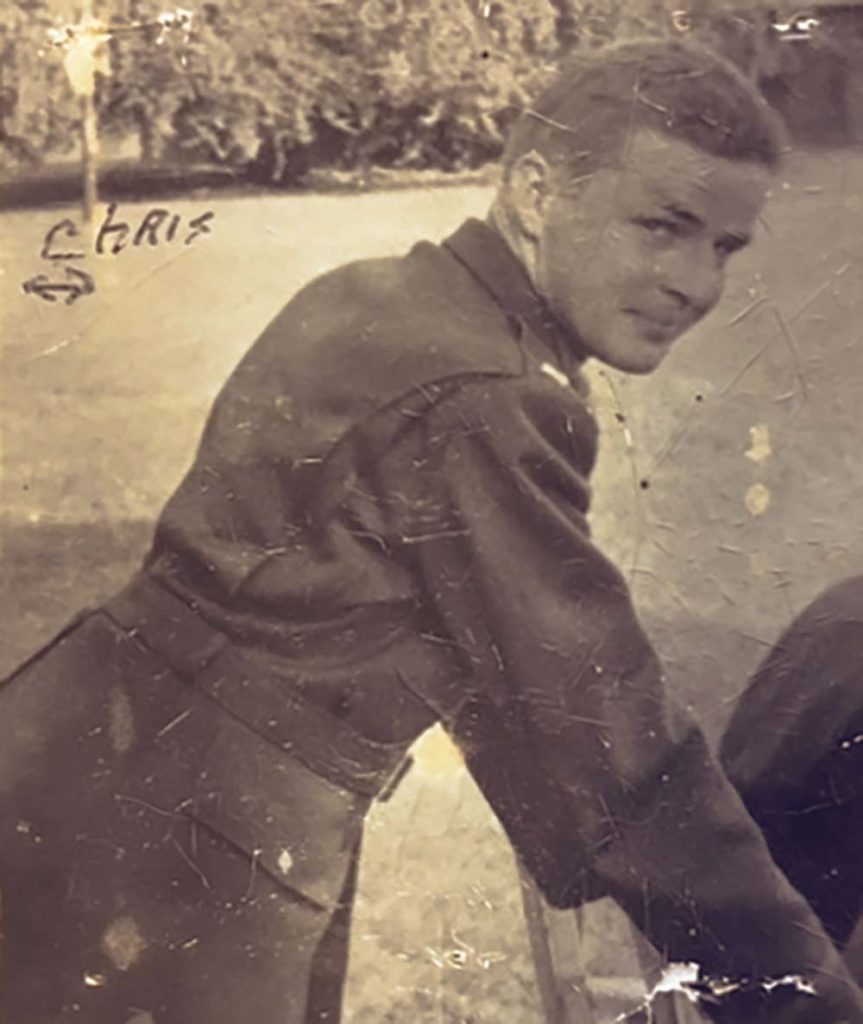
Called to War
Both boys were just out of high school when the Japanese bombed Pearl Harbor in December 1941.
“When the war broke out, the two of them decided, oh yeah, we got to go and fight,” Ohm said.
Ward signed on right away rather than waiting to be drafted.
“I’m the type of person who doesn’t like to be told what to do,” he said later.
In his diary, Ward wrote: “I left Eau Claire on the ‘400’ for Milwaukee, where I took my physical exam for the Army. Friday nite, ‘Dec. 11, 1942,’ I took my oath and then we left on a special troop train for Fort Sheridan [Illinois].”
He enlisted in the U.S. Army Air Forces in 1943 to attend mechanics school but instead volunteered as a ball turret gunner on B-17 bombers. He did so, without knowing what the job entailed, so he could remain with the friends he’d made during training. He finally headed overseas on March 27, 1944.
“Well today is the big day.” his diary read that day. “We are leaving the states for quite a while. Our whole crew spirits are pretty high and that helps an awful lot.”
Most Dangerous Job
Ward ended up near Foggia, Italy, via North Africa, with the 301st Bomb Group, 15th Air Force, where he honed his role as a ball turret gunner — one of the riskiest positions in a bomber; it was a well-known fact that the life expectancy of a belly gunner was only three missions.
Ward described his take on the position in an online article he wrote decades later.
“The ball turret gunners were a breed apart. Suspended in their pot-metal cocoon on the underside of the B-17 and B-24 bombers, these men had to deal with three of man’s main fears — heights, enclosed spaces, and death — while at the same time defending their ship from intense enemy attack.”
Hanseman’s Road to War
Chris Hanseman had to wait eight months after Pearl Harbor to enlist as an aviation cadet. His time finally came on his 18th birthday, in August 1942. He graduated from flight training in November 1943 and was commissioned a second lieutenant with Class 43-J. He completed replacement pilot training in P-47 Thunderbolt fighters, going on to volunteer with the 505th Fighter Squadron of the 339th Fighter Group.
When he deployed in January 1944 to the Eighth Air Force in Fowlmere, England, Hanseman was the squadron’s youngest pilot.
“When Chris Hanseman became our pilot, my first impression was not of an officer, but a big kid who should have been playing football,” his crew chief, Staff Sgt. Clarence Shockley, later said in an article about the history of the 339th Group.
Natural Fighter Pilot
Hanseman flew a P-51 for the first time on April 27, 1944, and three days later joined the group’s first combat mission. The flight leader, an older married man, apparently lacked Hanseman’s bloodthirsty drive.
“Chris was not impressed with the role of flying wingman for an unenthusiastic flight leader,” Shockley said. “He would occasionally press the attack when his flight leader would just as soon leave well enough alone.”
In fact, his flight leader threatened to ground him on at least one occasion for “charging into combat like a ‘bull in a china shop’”— and thus Hanseman’s moniker of “The Bull” was born. The young pilot even had a bull’s head painted on his fuselage — which soon became smeared, as he was too anxious to wait for the paint to dry before taking his P-51 back into flight.
First Kills
Hanseman’s first big mission occurred on May 21, 1944, when he participated in low-level fighter sweeps in Operation Chattanooga Choo-Choo in Germany — a mission in which the U.S. and British systematically bombed German trains, bridges and railway stations throughout northern Europe — and made his first kill on a single-engine German trainer. Three days later, he downed two German Me-109 fighters. He flew two missions on D-Day, totaling 9.5 hours in support of the invasion. On June 10, 1944, he made another aerial kill, his fourth, recording it in his flight log.
“While on area patrol over France, I became separated from my flight in heavy flak over an airdrome near Laigle. I then strafed an airfield 15 minutes north of Laigle, damaging one Ju-88, but the flak was so heavy I made no more passes. I proceeded alone 15 minutes north and ran into a squadron of Me-109s engaged in a landing pattern. I attacked one of the E/A [enemy aircraft] acting as top cover, opening with a 30 degree deflection shot at 300 yards. He had already started evasive action. I cut my throttle and turned inside of him, dropping 20 degrees of flaps. This put me about 150 yards directly astern of the 109. I opened fire again, closing to 65 yards and getting hits on the fuselage. At this point the pilot jettisoned his canopy and bailed out.”
World War II’s Youngest Ace
Shockley was deeply impressed by the young pilot’s skill.
“[Hanseman’s] combat success was even more remarkable since he flew predominantly as a wingman rather than in an attacking position. Chris was determined to make the most of any combat opportunity that came his way.”
Two more half-credits for shootdowns in the next month gave Hanseman five victories total—officially making him the world’s youngest ace.
He held onto the mantle of youngest ace for six months, from July 1944 to New Year’s Day 1945. That’s when 2nd Lt. Van Chandler, born on March 5, 1925, earned his fifth victory — making him the youngest by one month: 19 years, 10 months to Hanseman’s 19 years, 11 months.
Wartime Friendships
Pen Pals
The two friends, Hanseman and Ward, wrote each other letters during flight school and their subsequent assignments in the U.S. and Europe, and through those letters — along with ones Ward wrote his mother — their deep bond is evident. While Ward was more taciturn in his devotion to his friend, Hanseman’s exuberant personality shone through with his use of different quirky terms of endearment for Ward in every letter, including “Torpedo Boat,” “Lawnmower” and “Tugboat.” He signed off each one with “Love” or a playful “Love & Kisses.”
On May 15, 1944, he wrote: “Dear Rum Runner, … I just got back from London. What a place and those Picadilly [sic] Commandos [ladies of the night who swarmed around servicemen] are everything you hear and more. We had a wild party here last Saturday night and the whole damn group got drunk. We had a bunch of nurses from the station hospital here and we had a swell time. I wish we could have gotten in the same country, so we could get together again. … Love & Kisses, Jud”
Face to Face
On May 24, 1944, in advance of D-Day, Ward was transferred from Italy to England to the 364th Bomb Squadron, 305th Bombardment Group, Eighth Air Force, at Chelveston. He and Hanseman appear to have lost touch at that time, because Ward asked his mother in several letters to send his friend’s address. On July 16, 1944, after Ward had been in the hospital with the mumps, one of the nurses offered to help him find his friend through the Red Cross. In a letter to his mother on July 21, 1944, Ward wrote, “He isn’t very far from my base. I’m either going over there to see him or call him up.”
The two friends finally met up a few days later. Ward wrote his mother about it on July 25, 1944.
“Well I was with Chris for a couple days. I spent one night at his base and then we went to London and stayed there a night .… We sure did have a good time together and we really talked over old times .… They told me over at his base that Chris was one of their best pilots they had.”
On July 27, Hanseman flew to Chelveston to visit Ward.
“[We] went down to see his P-51,” Ward wrote. “Chris told me how one time he took off and his bubble canopy came off and he had to abort. He also said how mad he would get at his commander for not letting him fly every day. He put on a little show when he left. We stood on the bomb shelter level with the barracks roof, which was about ten feet high. Chris flew so close to the ground that we couldn’t see him pass, then pulled up and did six rolls on his way home.”
He also mentioned he was planning to meet Hanseman in London on Aug. 3 and 4 to celebrate Hanseman’s 20th birthday.
That celebration never happened.
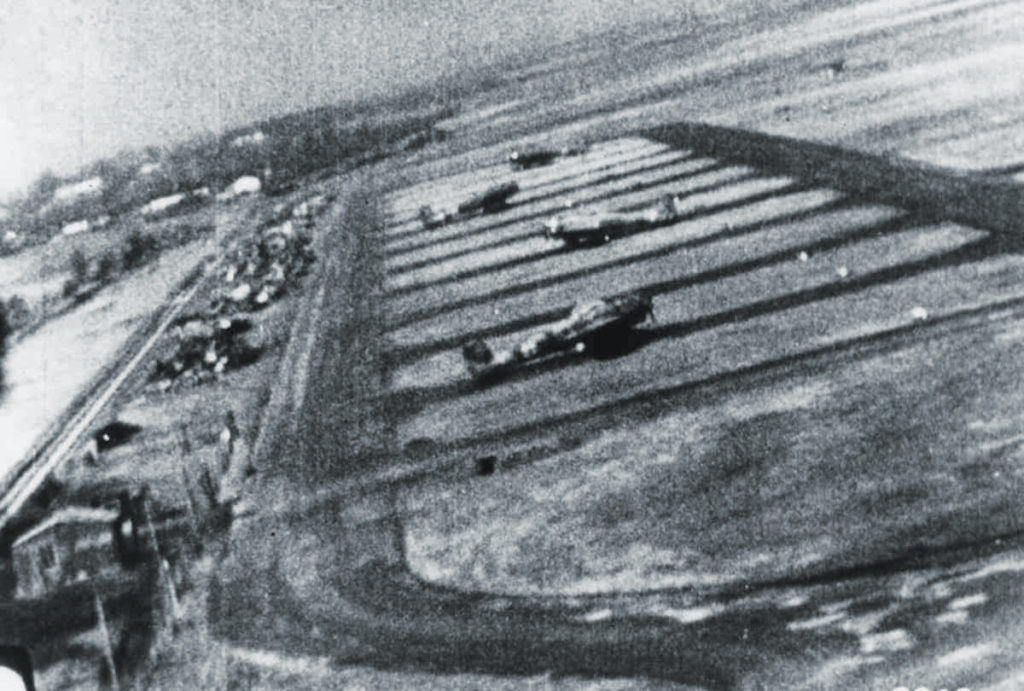
Final Mission
On July 28, 1944, the young men headed out for the first time together on the same mission, as Hanseman’s 339th P-51 Mustangs escorted Ward’s 305th Bomb Group’s B-17s to Merseburg, Germany. The goal was a synthetic oil refinery that Adolf Hitler had desperately protected with a ring of 400 antiaircraft guns — making it one of the war’s most dangerous assignments. They sortied again the next day, and the next, always after the same target. After that third day, Ward did not hear from Hanseman, and, with a sinking feeling in his heart, he went to London for the agreed-upon birthday celebration.
“Well, I just spent the last couple of days in London waiting for Chris but he never showed up,” Ward wrote in his diary on Aug. 4. “I think something must have happened to him.”
On Aug. 15, Ward received a pass to visit Fowlmere to check up on his friend. Hanseman’s wingman, Ed Ball, revealed what Ward had feared. Ball’s witness report recorded the young daredevil’s demise.
“On 29 July 44, I was flying Number Four position in Blue Flight. We had just broke up an attack on the bombers and ended up below the overcast …. We spotted two Ju-52 transports on the ground about four miles NW of Naumburg parked in a meadow along a row of fairly high trees. We went down to strafe them and on the first past, Lieutenant C. J. Hanseman, who was flying Number Two position, evidently carried his pass too far, catching a wing in the ground and cartwheeling over the trees into a field. His plane caught fire and scattered over a wide area.”
Ward later wrote: “When we finally accepted the fact that Chris was lost, it was like the loss of a loved family member. Grown men are not supposed to cry, but I shed a few tears just the same.”
Hanseman was buried in a German cemetery, with his remains moved after the war to Lorraine U.S. Military Cemetery in France. Later, his parents requested his remains be transferred to the Lutheran Church Cemetery in Tell, Wisconsin, about half an hour from Mondovi.
Ward After the War
Upon returning to Mondovi after the war, Ward got a job, as everyone did.
“Doug became the first mail carrier in the city,” Ohm said. “No one talked about the war. Everyone got a job, got to work, raised their families.”
In the 1960s, Ward constructed the Log Cabin Airport, a throwback airfield near Mondovi with two grass runways, three log cabins, an outhouse and four open-air hangars, where he would be seen wearing his uniform up until his death in 2018 at the age of 94. Here he and Ohm hosted the Log Cabin Fly-In for more than 30 years, a festive gathering of pilots who arrived by plane. And here his weathervane above the barn was in the shape of a P-51 painted in the colors of his childhood friend’s airplane.
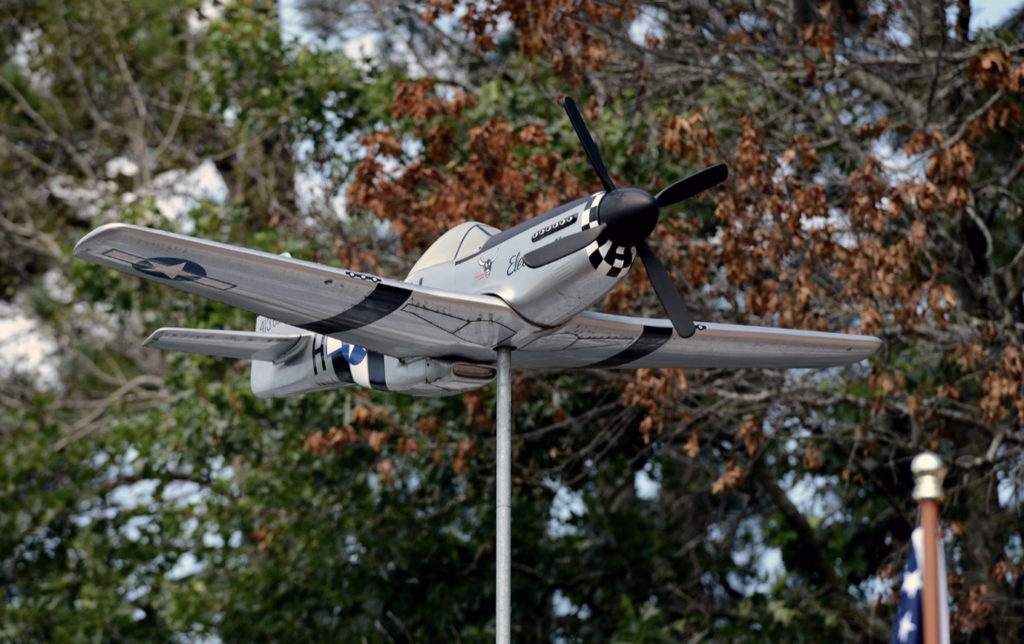
Remembering Chris Hanseman
In 2013, newcomer Ron Keys and his wife, Heidi, bought a small farm in Mondovi to host weddings and other special events. Their home was a white-frame house and its adjoining red barn stand near a glassy lake, a quintessential snippet of rural Midwest life. They didn’t know until later that it was once the home of Hanseman, one of the youngest aces of World War II.
Today, Ron Keys loves to talk about Hanseman with those who ask.
“When I learned Chris grew up on this farm and in the house we saved,” he said. “I did not sleep for two nights. I really did not sleep well until I went and saw his gravestone.”
The Hanseman family lived at the farmhouse for 50 years, until 1968.
“The farmhouse did not change over all those years,” Keys said. “We lifted it and gutted it and rewired it. And when we opened the walls, we found a photo with Chris’s writing on back.”
Keys added that, after the war, the Hansemans sold Ward acreage at the end of the property, where he built a house, which still stands. Every now and again, someone will show up and say they’re related to Chris Hanseman. Keys said he’s thrilled to connect with the past and Mondovi’s wartime service and sacrifice. The fact that Hanseman’s record was eclipsed doesn’t matter to the people of Mondovi.
“Of course, the locals here are going to argue that he [remains the youngest ace of World War II],” Keys said.
In the same way across America, similar towns hold their own tales, of young men going off to fight, families left behind, friendships, triumphs, heartbreaks — nearly forgotten vignettes in the wide-sweeping story of World War II.
historynet magazines
Our 9 best-selling history titles feature in-depth storytelling and iconic imagery to engage and inform on the people, the wars, and the events that shaped America and the world.


